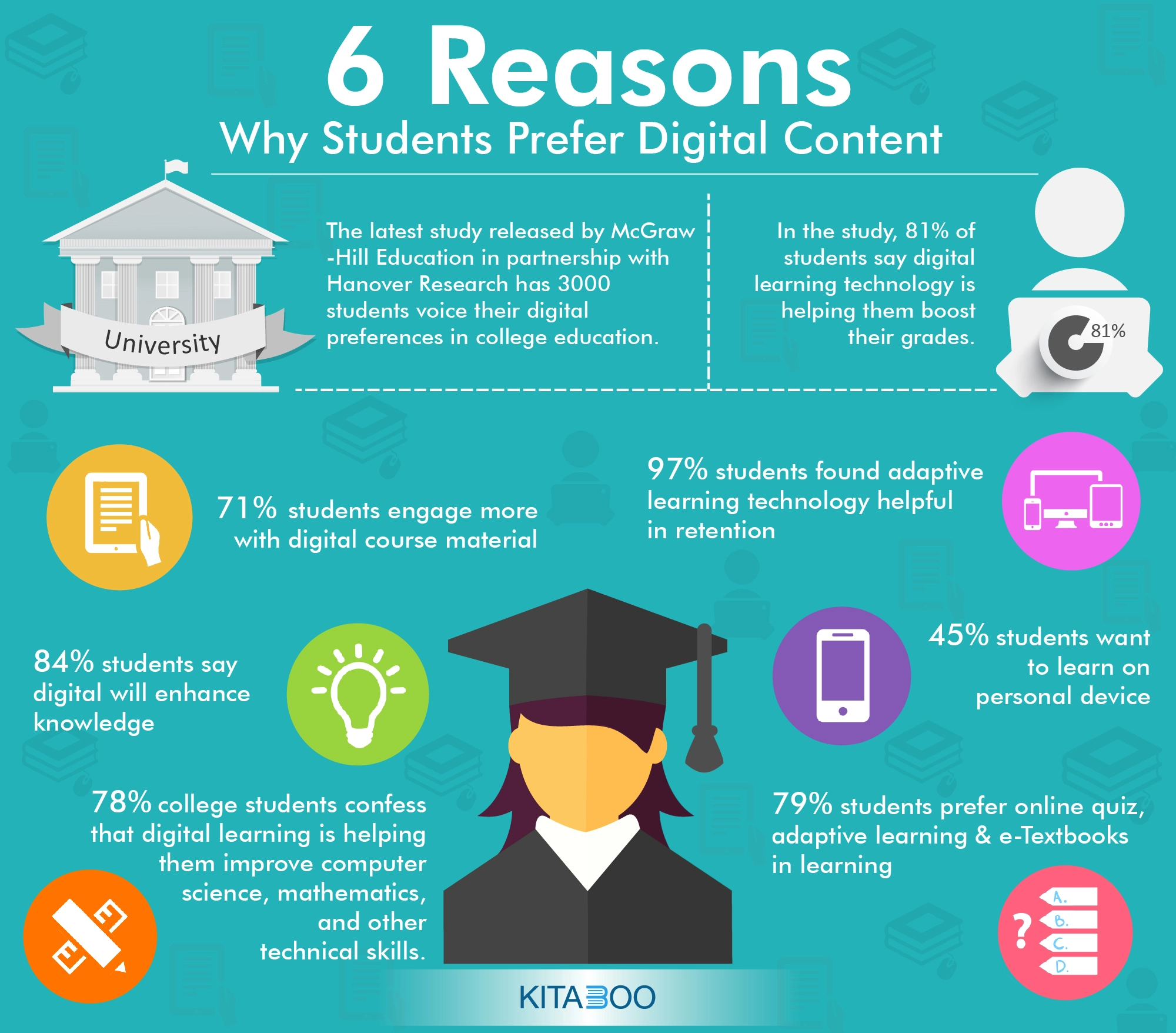
Is Online Education Better than Traditional Education? (2025)
Educational institutes have been practicing the traditional teaching method since ages. Most of us are familiar with the traditional model where one teacher is teaching fifty students at a time.
No one knows if those fifty students are able to understand what is being explained or if they are even paying attention to the lecture. This style of teaching is not considered very effective today.
Students have access to new technology which helps them learn and retain information in a far better manner. Which means, it is time for educational institutes to bring some changes to its teaching methods. A popular alternative to traditional education is online education or eLearning.
Online education is better than traditional education, debates the most significant element of the online education model. The online education model is basically trying to overcome the disadvantages of the traditional education system, while also providing additional benefits.
In a traditional teaching model, students listen to long lectures, take notes, and usually resort to rote memorization.
This leaves little or no room for active interaction in the classroom. Online education, on the other hand, encourages participation in classroom activities and peer-to-peer collaboration.
With the availability of various forms of online study resources, students are able to engage with their courseware and gain knowledge in a much more engaging manner.
How Online Education in 2025 Impacts Traditional Education?
Students Can Learn at Their Own Pace:
Students have complete control over their lessons. Meaning, they can now learn as per their own pace and learning capacity. Each student learns and memorizes differently.
Some might be quick learners, while some might take time to understand a certain topic. In a classroom environment, the teacher explains concepts and answers doubts, but there’s only so much that they can do.
There could be students whose doubts remain unanswered. Some students might feel that the teacher’s pace of teaching is too fast for them. It’s not possible for a teacher to pay individual attention to each student.
Online education addresses this issue by offering additional information and explanations via eBooks and other forms of online resources.
Students do not have to wait for the teacher to start/finish a chapter, they can do it themselves.
Online learning allows them to take control of their own learning process. They can go through the content, re-read chapters, listen to audio-books or take help from external links.
This helps them undertake courses as per their learning capacity and convenience. Online education helps students in becoming active learners, rather than passive learners while taking full responsibility for their own studies.
Also read: Top Benefits of Using Digital Textbooks in Education
Reduces Dependency on Teachers:
When students have an online learning option available to them, the dependence on teachers for more information or notes reduces.
They can get additional information all by themselves with the help of online libraries. With easy access to the internet, students can browse through thousands of online learning content.
This would better prepare them for their examinations, as they have access to not only their own courseware that the institute has recommended but also external and additional information. Online learning thus reduces dependence on teachers for notes and explanations.
Related read: 10 Most Important Features of The Best Online Education Platform
Cost Effective Learning Materials:
If you compare the cost factor, you would find that online education is way more affordable for students than traditional education. This is because of the difference in the creation of online course materials and printed textbooks. A paperback book is costlier because it involves a lot of process in its making. From cutting down trees to the production of paper, printing, packaging, and shipping.
All these processes add to the cost of each printed book. Whereas eBooks are created on an online software and is digitally published and distributed.
Hence, the cost of eBooks is always cheaper than the combined cost of traditional textbooks for the academic year. Moreover, you get all the learning materials at one place.
Students do not have to buy different books for different subjects, unlike traditional education demands. Thus, online education is environment and student friendly.
Click on the image below to view an infographic on reasons why students prefer digital content.
More Social Interaction and Collaboration:
The traditional education model allows students to interact with each other in and outside of school. But those are mainly face-to-face or telephonic interactions.
Online learning model allows further interaction by providing an online platform for discussions. eBooks can be embedded with sharing features, where students can share content and comment on other student’s posts.
With most students being active social media users, this kind of an interactive platform encourages them to share, like and comment on course contents.
Students can post doubts and queries on the online platform, starting a discussion thread with teachers and other students.
Teachers may prefer to continue the discussion in classrooms, enabling everyone to share their views and opinions, and understand others’ perspectives as well. It thus helps in having in-depth and engaging classroom discussions.
Easy to Assess and Give Feedback:
Teachers usually spend a good amount of time in correcting papers, grading students, checking assignments etc. There’s too much paperwork involved in the traditional education approach.
Introducing online course modules will help in reducing this time. The teachers could instead spend more time creating an interactive learning environment in the classroom with activities, discussions etc.
Online assignments are comparatively easy to assess. Students submit their tests or assignments online and teachers can view the answers and evaluate them anytime and anywhere.
They don’t have to sit with a bunch of paper for review. As online content can be viewed on mobile-based platforms, they can do it while waiting for the bus, taking a break in between lectures etc.
And they can also give feedback to students via the same platform. So, online education makes life easy for students as well as teachers.
Analyze the Learning Pattern:
In the debate traditional education vs online education, the traditional education system has no means to gauge the interest levels of students. You can’t really tell if the students have finished reading a particular chapter.
Whereas in online education analytics tool gives an in-depth report about every student’s performance. It enables you to measure the engagement level of the entire class.
Teachers can look into the course delivery and consumption patterns, such as the number of chapters read, progress rate, tests attempted etc.
This information helps teachers to design their classes as per the learning patterns of students.
Encourages Students to Talk Rather Than Listen in Classrooms:
The flipped classroom approach has gained popularity in recent times for its ability to reverse the traditional teaching model. Which means teachers now encourage students to do their ‘homework’ in school and do the reading and studying part at home. Students are asked to read online content or watch video-based learning content at home and the same is discussed in the classroom.
This approach helps in creating an interactive classroom where students learn by solving problems in class with their peers and teacher around them. This makes for a more effective learning technique. With a flipped classroom approach, teachers are aiming to provide more knowledge to students by encouraging them to ask questions, perform individual or group activities etc. Thus, the reverse learning model encourages teamwork and collaboration, leading to an engaging learning experience.
Students Can Revisit the Classes That Were Missed:
Students sometimes tend to miss out on a few lectures, either because they are unwell, or they find it too dull and boring to attend. In either case, it is not possible for the teacher to conduct the same lecture again for a couple of students. Because doing so would be unfair to the other students in the class.
But, with the help of online courses, students can go through the courseware at their convenient time or when they feel they are in an attentive state. As online notes can be shared with peers, students would also have access to any extra information provided by the teacher in class.
They no longer have to fear missing out on topics and chapters. Because even if they miss out on a few topics, they can catch up with the help of online tutorials and other links. Some universities also record their lectures for students to view later. Online education, thus ensures, that students never miss any topics covered in the classroom.
Interactive Content:
While online education promotes classroom interaction, it also enables students to interact with their courseware. With features like drag and drop and click and reveal, online learning allows students to engage with their learning material.
The courseware is designed in a responsive fashion so that students can easily access them on any platform and device of their choice. And the content is also embedded with multiple interactive elements such as external links, videos, audio etc., for better engagement.
Educational publishers and institutes also include gamification and interactive quizzes and assessments to make the course module more challenging for the students. When the course contents become interactive, it helps students to retain information faster.
Learn how to create an interactive ebook now!
Also Read: 10 Must-Have Features of an Online Education Platform
Conclusion:
Traditional teaching has been around for thousands of years. We don’t recommend shutting down schools and colleges and conducting only online courses. The traditional method has its own benefits like face-to-face interaction and developing interpersonal skills and group learning, which are essential skills for the overall development of a student.
The debate on traditional education vs online education sparks a lot of questions on the education system. But, it can’t be denied that technology, if used wisely, can play a powerful role in teaching. So, instead of replacing formal education with online education, they can be merged together to create a more effective, efficient, and interactive learning experience.
Contact our expert team now and get started!
Discover how a mobile-first training platform can help your organization.
KITABOO is a cloud-based platform to create, deliver & track mobile-first interactive training content.




